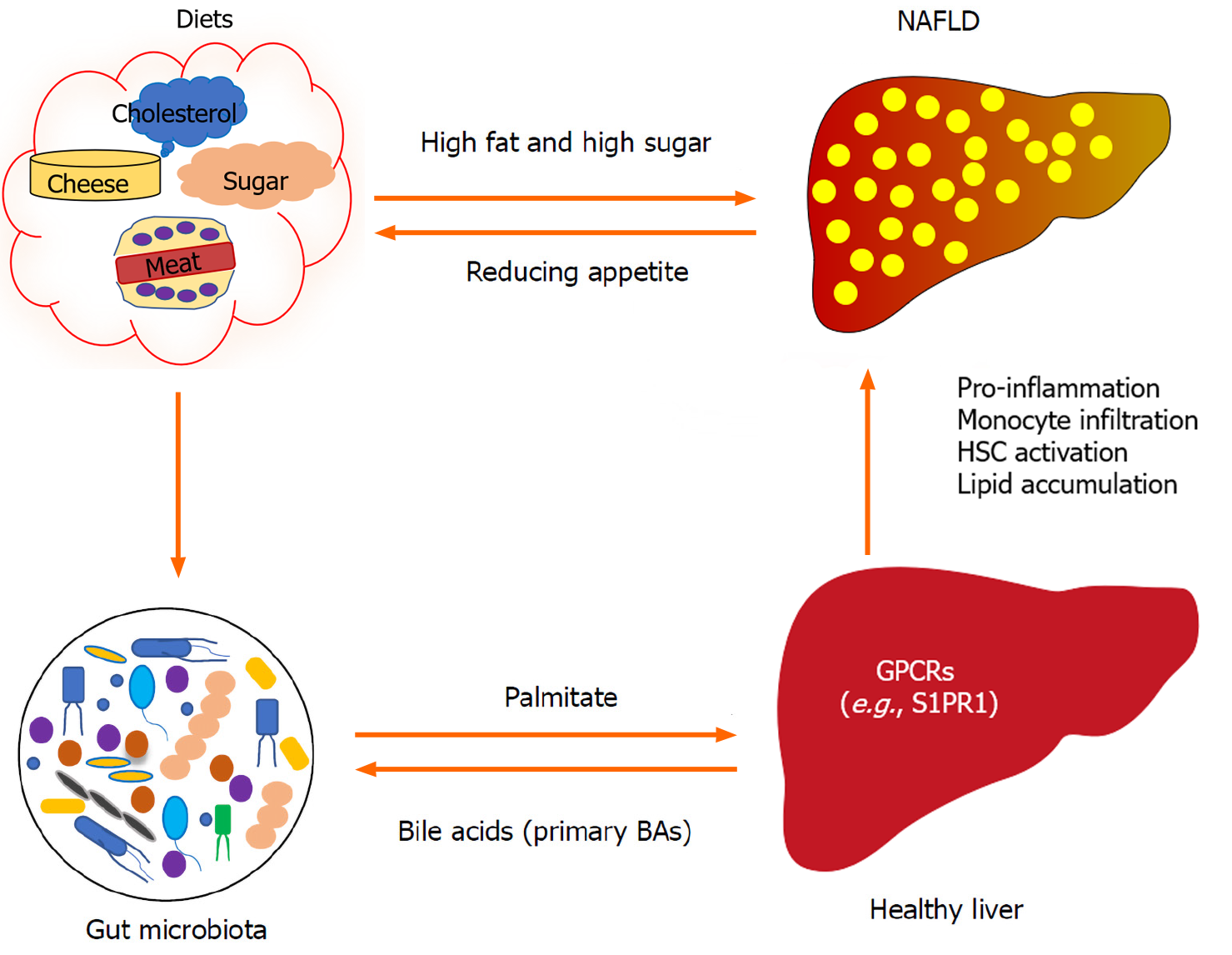Copyright
©The Author(s) 2021.
World J Gastroenterol. Feb 28, 2021; 27(8): 677-691
Published online Feb 28, 2021. doi: 10.3748/wjg.v27.i8.677
Published online Feb 28, 2021. doi: 10.3748/wjg.v27.i8.677
Figure 2 G protein-coupled receptor-mediated interaction of the gut and liver.
Gut microbiota-derived metabolites or molecules (e.g., palmitate) impact liver function by being metabolized to sphingosine 1-phosphate in hepatocytes, which can stimulate the activation of hepatic stellate cells (HSCs) and proinflammation via sphingosine 1-phosphate receptor 1 (S1PR1). In turn, primary bile acids (BAs) are synthesized in the liver, which can also influence the components of gut microbiota. A high fat and high sugar diet can induce nonalcoholic fatty liver disease (NAFLD) and change gut microbiota. Gut microbiota has been shown to impact appetite, and the progression of NAFLD may also impact the appetite. GPCRs: G protein-coupled receptors.
- Citation: Yang M, Zhang CY. G protein-coupled receptors as potential targets for nonalcoholic fatty liver disease treatment. World J Gastroenterol 2021; 27(8): 677-691
- URL: https://www.wjgnet.com/1007-9327/full/v27/i8/677.htm
- DOI: https://dx.doi.org/10.3748/wjg.v27.i8.677









